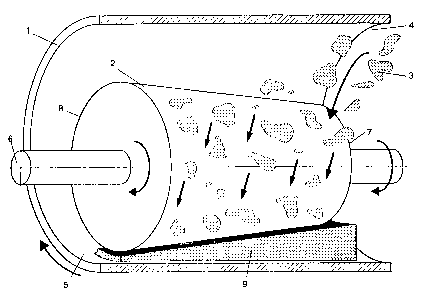Une partie des informations de ce site Web a été fournie par des sources externes. Le gouvernement du Canada n'assume aucune responsabilité concernant la précision, l'actualité ou la fiabilité des informations fournies par les sources externes. Les utilisateurs qui désirent employer cette information devraient consulter directement la source des informations. Le contenu fourni par les sources externes n'est pas assujetti aux exigences sur les langues officielles, la protection des renseignements personnels et l'accessibilité.
L'apparition de différences dans le texte et l'image des Revendications et de l'Abrégé dépend du moment auquel le document est publié. Les textes des Revendications et de l'Abrégé sont affichés :
| (12) Brevet: | (11) CA 2187595 |
|---|---|
| (54) Titre français: | CONFIGURATION DE TAMBOUR |
| (54) Titre anglais: | ROLL DESIGN |
| Statut: | Périmé et au-delà du délai pour l’annulation |
| (51) Classification internationale des brevets (CIB): |
|
|---|---|
| (72) Inventeurs : |
|
| (73) Titulaires : |
|
| (71) Demandeurs : |
|
| (74) Agent: | SMART & BIGGAR LP |
| (74) Co-agent: | |
| (45) Délivré: | 2002-11-26 |
| (22) Date de dépôt: | 1996-10-10 |
| (41) Mise à la disponibilité du public: | 1997-04-14 |
| Requête d'examen: | 1997-03-13 |
| Licence disponible: | S.O. |
| Cédé au domaine public: | S.O. |
| (25) Langue des documents déposés: | Anglais |
| Traité de coopération en matière de brevets (PCT): | Non |
|---|
| (30) Données de priorité de la demande: | ||||||
|---|---|---|---|---|---|---|
|
L'invention concerne une presse à tambour, dans laquelle l'espace entre le tambour (1) et le rouleau (2) est plus grand à l'extrémité d'entrée qu'à l'extrémité de sortie. L'espace peut diminuer de manière continue ou par étapes. De manière préférée entre toutes, le tambour est de forme cylindrique et l'extrémité avant du rouleau est plus mince que l'extrémité arrière. L'avantage essentiel de ce dispositif consiste en ce que l'alimentation est plus facile à agencer avec plus d'espace au niveau de l'extrémité d'entrée. Le dispositif peut être appliqué, par exemple, au pressage de l'écorce, de boues ou de pâte chimique.
The invention relates to a drum press, in which the gap between the drum (1) andthe roll (2) is greater at the input end than at the output end. The gap may decrease continuously or stepwise. Most preferably the drum is cylindrical in shape and the front end of the roll is thinner than the rear end. The chief advantage of the device is that feeding is easier to arrange with more space at the input end. The device is applicable for instance in the pressing of bark, sludge or chemical pulp.
Note : Les revendications sont présentées dans la langue officielle dans laquelle elles ont été soumises.
Note : Les descriptions sont présentées dans la langue officielle dans laquelle elles ont été soumises.

2024-08-01 : Dans le cadre de la transition vers les Brevets de nouvelle génération (BNG), la base de données sur les brevets canadiens (BDBC) contient désormais un Historique d'événement plus détaillé, qui reproduit le Journal des événements de notre nouvelle solution interne.
Veuillez noter que les événements débutant par « Inactive : » se réfèrent à des événements qui ne sont plus utilisés dans notre nouvelle solution interne.
Pour une meilleure compréhension de l'état de la demande ou brevet qui figure sur cette page, la rubrique Mise en garde , et les descriptions de Brevet , Historique d'événement , Taxes périodiques et Historique des paiements devraient être consultées.
| Description | Date |
|---|---|
| Le délai pour l'annulation est expiré | 2016-10-11 |
| Lettre envoyée | 2015-10-13 |
| Inactive : Lettre officielle | 2010-02-26 |
| Inactive : Lettre officielle | 2010-02-24 |
| Inactive : Renversement de l'état sera réputé périmé | 2009-12-04 |
| Inactive : Paiement - Taxe insuffisante | 2009-12-04 |
| Lettre envoyée | 2009-10-13 |
| Inactive : CIB de MCD | 2006-03-12 |
| Accordé par délivrance | 2002-11-26 |
| Inactive : Page couverture publiée | 2002-11-25 |
| Inactive : Taxe finale reçue | 2002-08-28 |
| Préoctroi | 2002-08-28 |
| Un avis d'acceptation est envoyé | 2002-03-12 |
| Un avis d'acceptation est envoyé | 2002-03-12 |
| Lettre envoyée | 2002-03-12 |
| Inactive : Approuvée aux fins d'acceptation (AFA) | 2002-03-01 |
| Modification reçue - modification volontaire | 2001-08-30 |
| Inactive : Dem. de l'examinateur par.30(2) Règles | 2001-06-27 |
| Modification reçue - modification volontaire | 2000-09-08 |
| Inactive : Dem. de l'examinateur par.30(2) Règles | 2000-03-14 |
| Modification reçue - modification volontaire | 1999-11-15 |
| Inactive : Dem. de l'examinateur par.30(2) Règles | 1999-05-14 |
| Inactive : Dem. traitée sur TS dès date d'ent. journal | 1997-07-31 |
| Inactive : Renseign. sur l'état - Complets dès date d'ent. journ. | 1997-07-31 |
| Demande publiée (accessible au public) | 1997-04-14 |
| Exigences pour une requête d'examen - jugée conforme | 1997-03-13 |
| Toutes les exigences pour l'examen - jugée conforme | 1997-03-13 |
Il n'y a pas d'historique d'abandonnement
Le dernier paiement a été reçu le 2002-09-17
Avis : Si le paiement en totalité n'a pas été reçu au plus tard à la date indiquée, une taxe supplémentaire peut être imposée, soit une des taxes suivantes :
Les taxes sur les brevets sont ajustées au 1er janvier de chaque année. Les montants ci-dessus sont les montants actuels s'ils sont reçus au plus tard le 31 décembre de l'année en cours.
Veuillez vous référer à la page web des
taxes sur les brevets
de l'OPIC pour voir tous les montants actuels des taxes.
Les titulaires actuels et antérieures au dossier sont affichés en ordre alphabétique.
| Titulaires actuels au dossier |
|---|
| FINBARK OY |
| Titulaires antérieures au dossier |
|---|
| TIMO TAPIO SAALASTI |